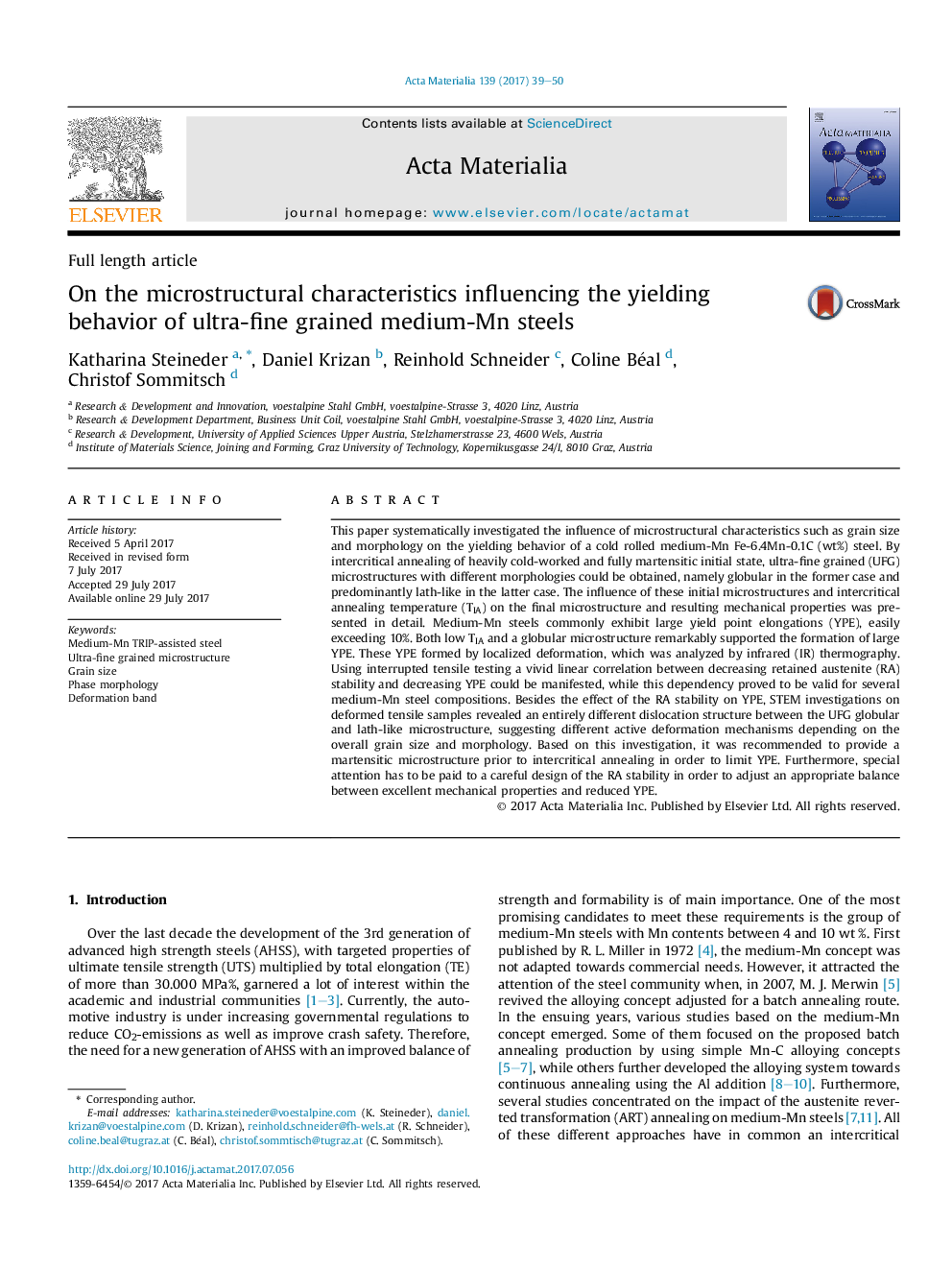| Article ID | Journal | Published Year | Pages | File Type |
|---|---|---|---|---|
| 5435804 | Acta Materialia | 2017 | 12 Pages |
This paper systematically investigated the influence of microstructural characteristics such as grain size and morphology on the yielding behavior of a cold rolled medium-Mn Fe-6.4Mn-0.1C (wt%) steel. By intercritical annealing of heavily cold-worked and fully martensitic initial state, ultra-fine grained (UFG) microstructures with different morphologies could be obtained, namely globular in the former case and predominantly lath-like in the latter case. The influence of these initial microstructures and intercritical annealing temperature (TIA) on the final microstructure and resulting mechanical properties was presented in detail. Medium-Mn steels commonly exhibit large yield point elongations (YPE), easily exceeding 10%. Both low TIA and a globular microstructure remarkably supported the formation of large YPE. These YPE formed by localized deformation, which was analyzed by infrared (IR) thermography. Using interrupted tensile testing a vivid linear correlation between decreasing retained austenite (RA) stability and decreasing YPE could be manifested, while this dependency proved to be valid for several medium-Mn steel compositions. Besides the effect of the RA stability on YPE, STEM investigations on deformed tensile samples revealed an entirely different dislocation structure between the UFG globular and lath-like microstructure, suggesting different active deformation mechanisms depending on the overall grain size and morphology. Based on this investigation, it was recommended to provide a martensitic microstructure prior to intercritical annealing in order to limit YPE. Furthermore, special attention has to be paid to a careful design of the RA stability in order to adjust an appropriate balance between excellent mechanical properties and reduced YPE.
Graphical abstractFigure optionsDownload full-size imageDownload high-quality image (267 K)Download as PowerPoint slide
